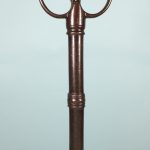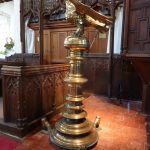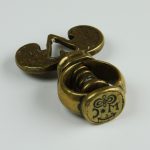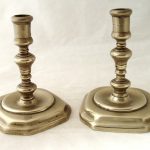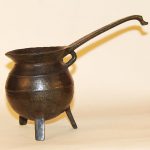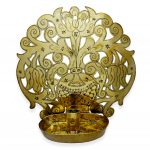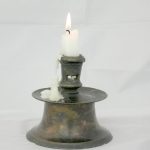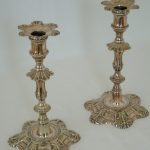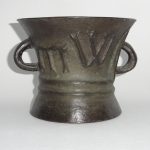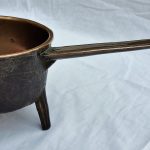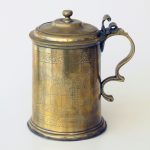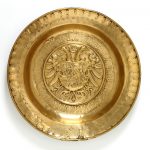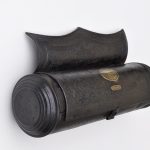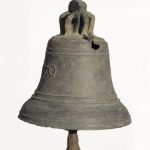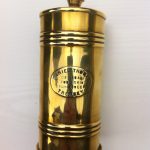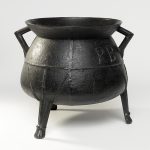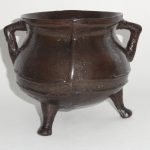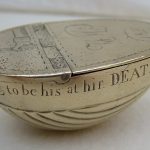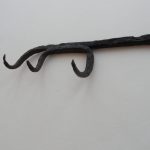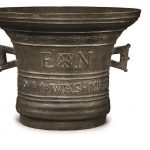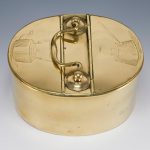English Mortar
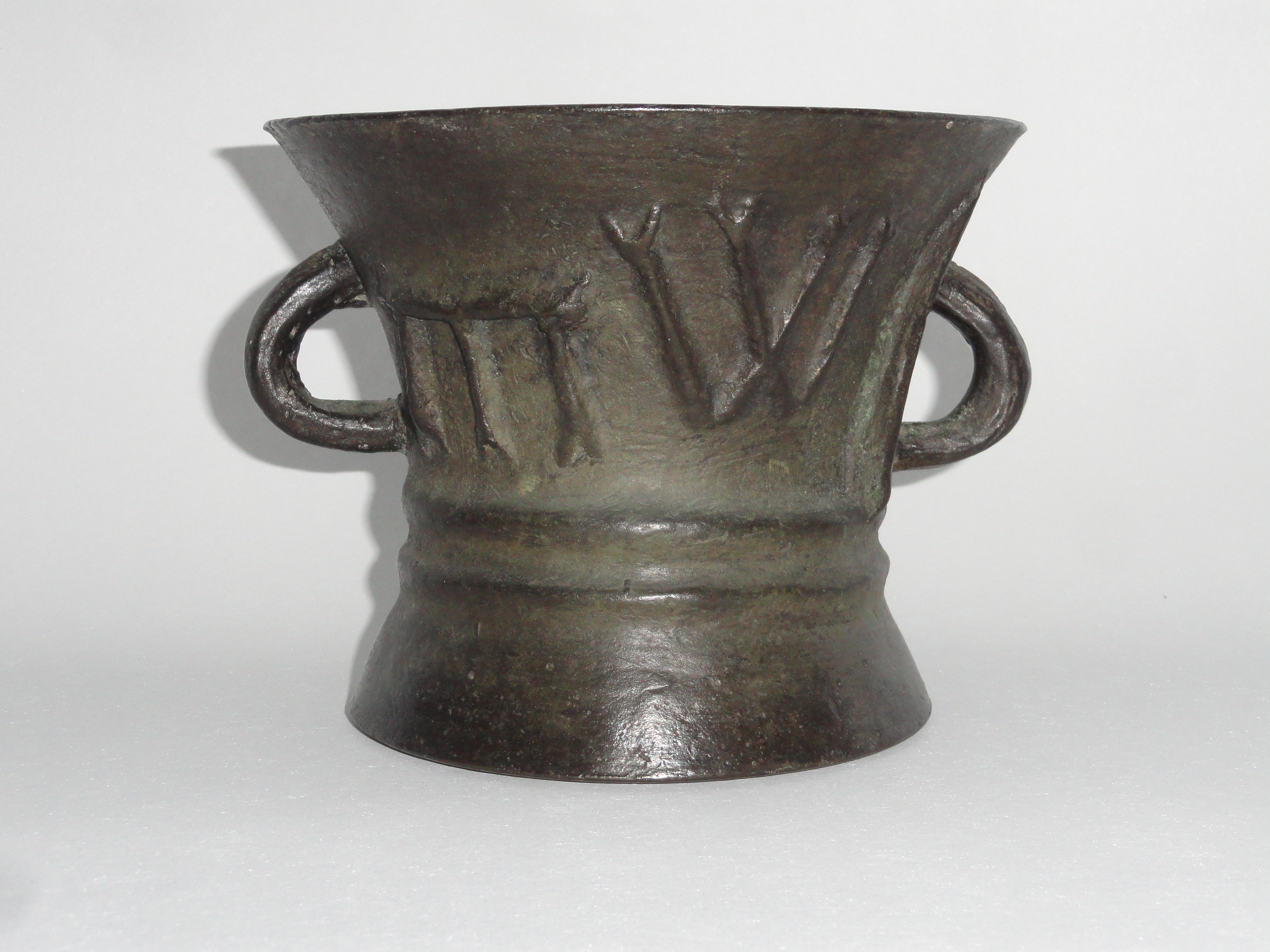
Dimensions: Height: 5 5/8″ (14.3cm), Diameter: 6 7/8″ (17.5cm).
Place of Origin: England.
Date: circa 1550-1600.
Maker or Retailer: Unknown.
Present Location: Private Collection.
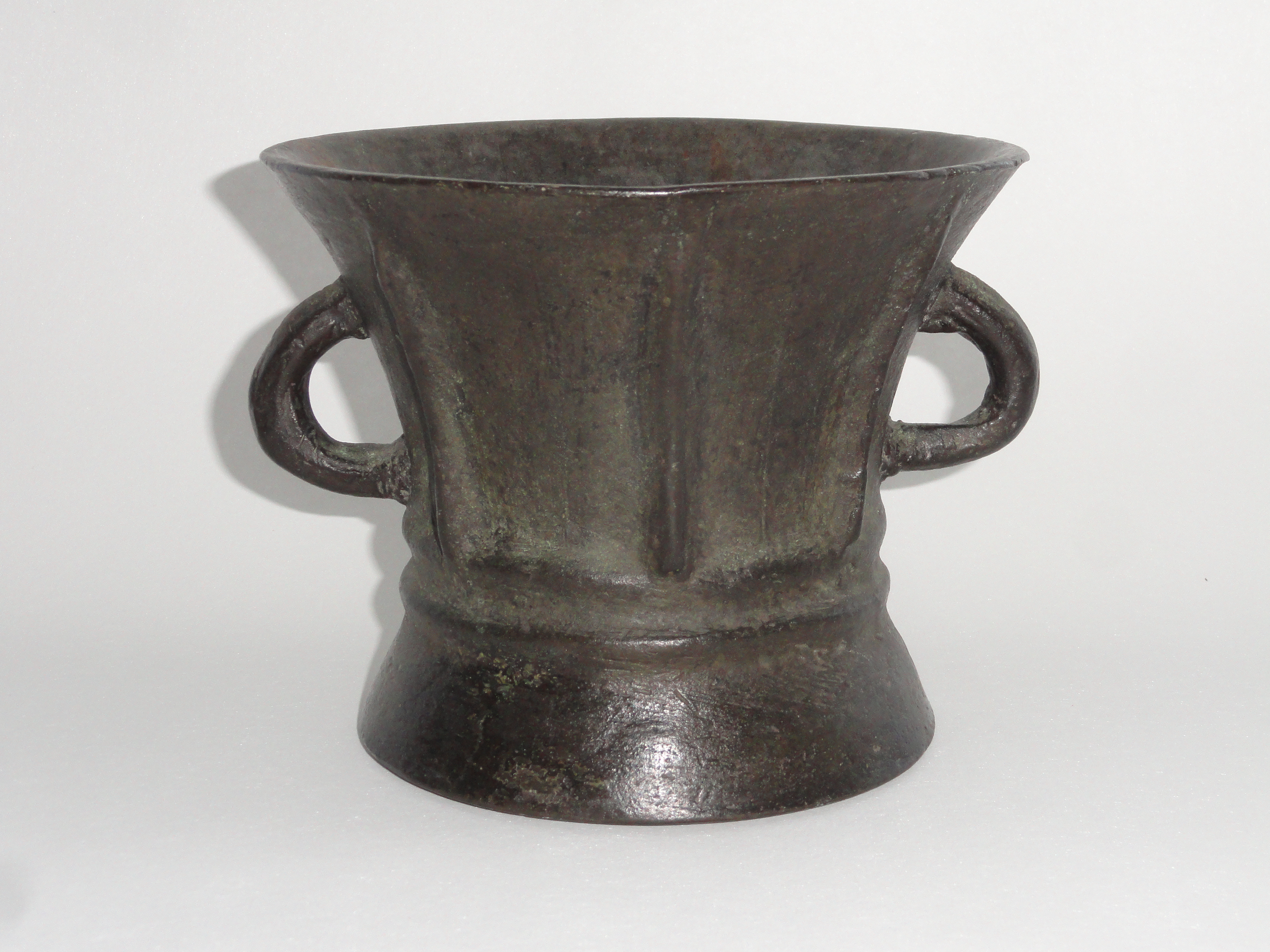
The letters have distinctive “fork” shaped serifs that are unusual, but somewhat similar to letters used by Anthony Wakefield and James Giles of Chichester. At first sight, the initial letter appears to be an “M”, but given the placement of the serifs, it is likely to have been made by a letter “E” stamp. It’s placement may have been by design, to represent a letter “M”, or by mistake when trying to represent a letter “E”. Many founders from that era are thought to have been, at best, only semi-literate and examples of their confusion about which way up to use their stamps may be seen in drawings 270 and 271 on page 237 of the reference.
Reference:
English Decorated Bronze Mortars and their Makers. Finlay, M., 2010. ISBN 13 9781872477022. Plains Books.

